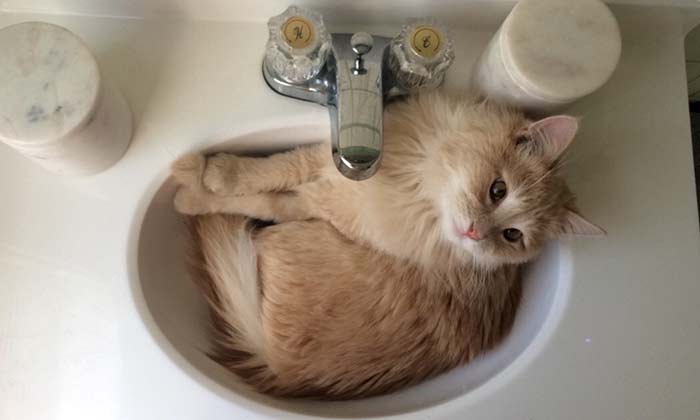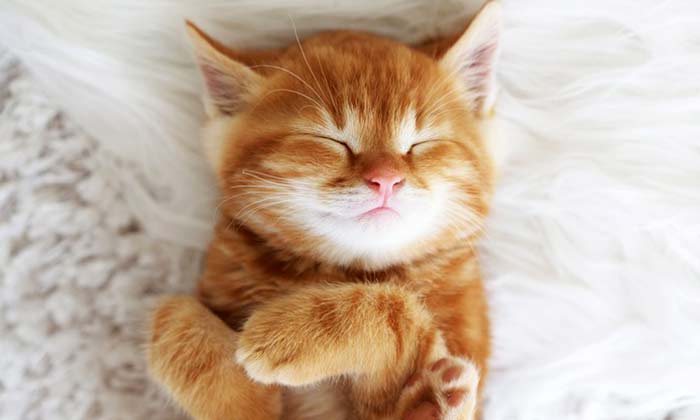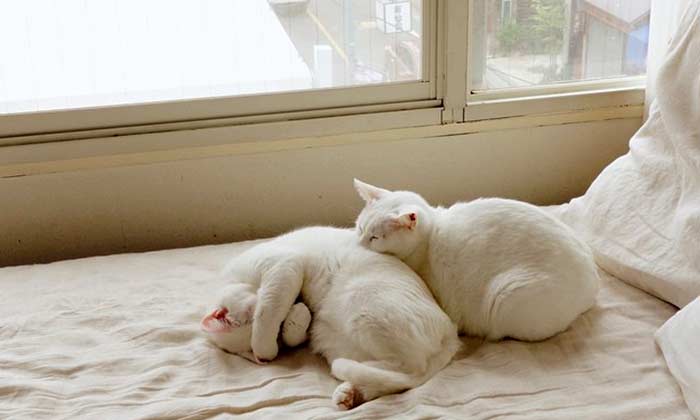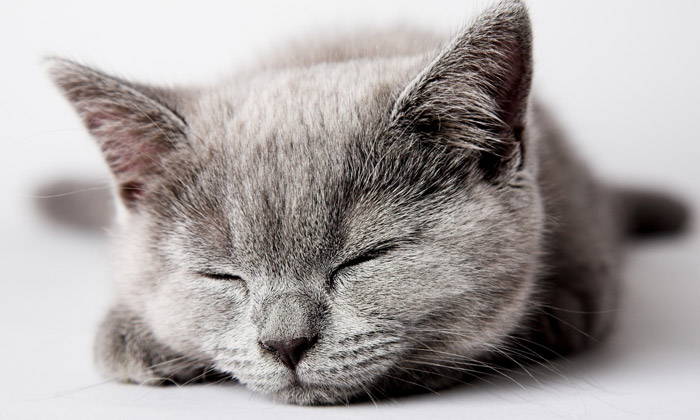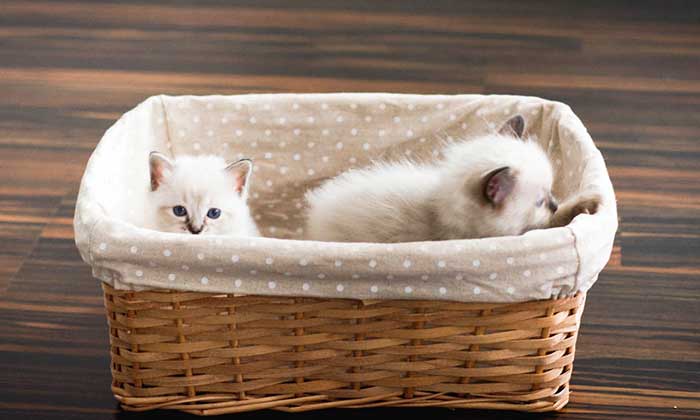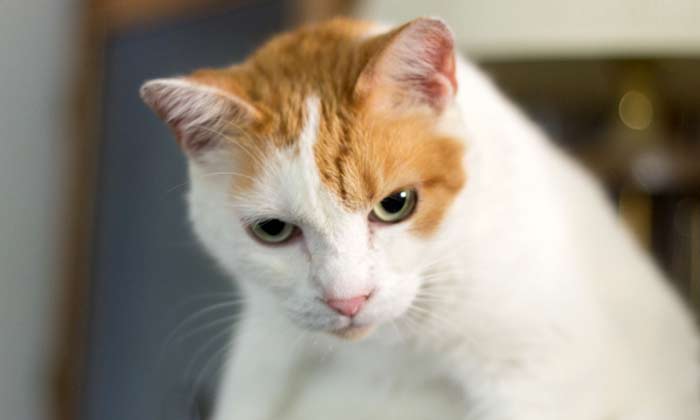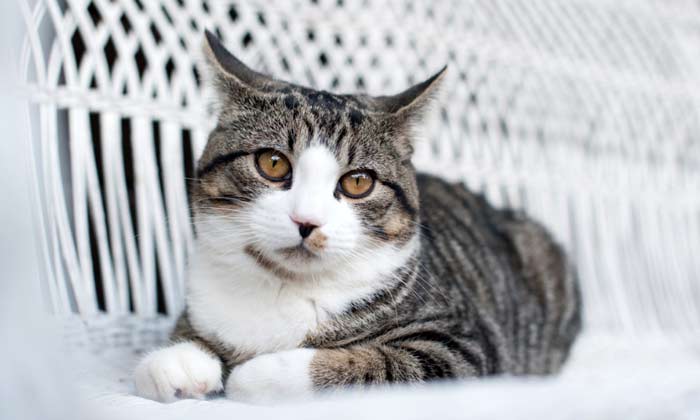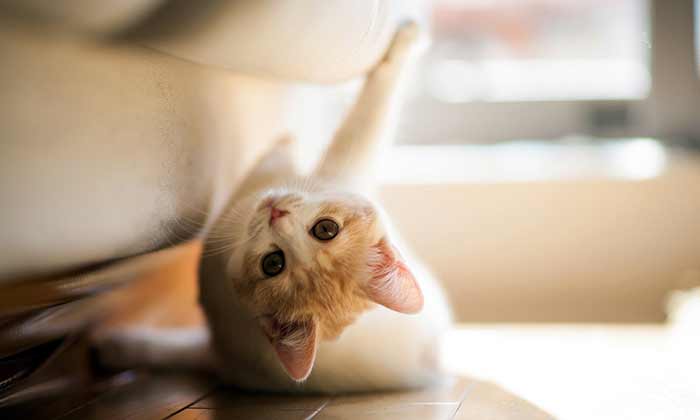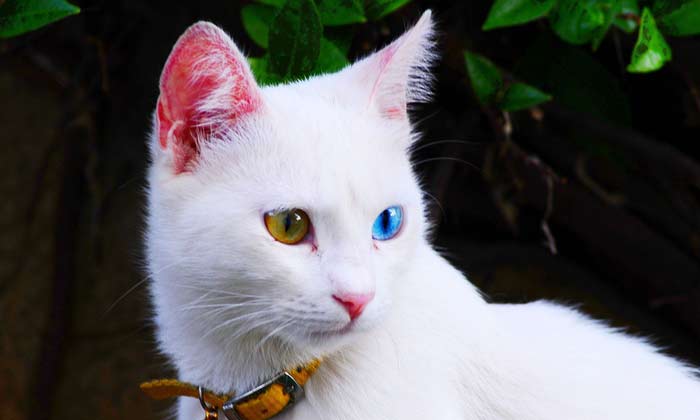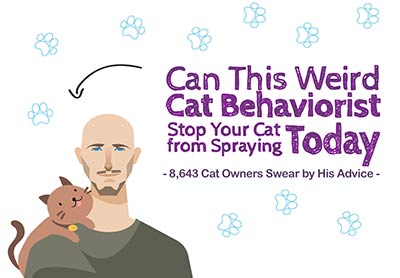Cat Litter Boxes – Why Your Cat Won’t Use It
We’ve all been there – avoiding the cat litter boxes is a common problem that cat owners face. There are several different causes that may cause such behavior. Cats may dislike the type of litter or the type of boxes, or even the position of it. Even some changes around the house or outside or medical conditions may trigger cats to relieve themselves elsewhere. Luckily, most of these have simple solutions and can be overcome rather quickly.
Most cats have no trouble using the bathroom in their cat litter boxes. However, some feline friends will refuse to use their cat litter boxes at all or suddenly stop using their litter box without notice. Understanding your cat why he won’t use their litter box is key to remedying the problem quickly.
- Medical reasons why your cat won’t use cat litter boxes
- Different Cat Litter Box Problems and Solutions
- How to deal with cats urinating outside of the litter box
Remember that this behavior doesn’t come from your cat’s need to mess with you. Therefore, strict punishment may only make things worse. Stress is the core of most of these cases, so your aggressive approach won’t help with the issue. Quite the contrary, you may only stress her out even more. Rather than that, try determining what caused the problem so you can start fixing it.
Medical Reasons Why Your Cat Hates Cat Litter Boxes
Visit the vet
The first thing you want to do is have your cat checked for any medical issues. It often happens that some medical problems make your cat avoid cat litter boxes and lead to cat spraying.  However, there is no room for panic as the issues that affect your cat in this way are usually easy to cure. Some symptoms that you need to pay attention to are blood in the urine, frequent genital licking or putting too much effort into urinating, which is usually followed by pain.
However, there is no room for panic as the issues that affect your cat in this way are usually easy to cure. Some symptoms that you need to pay attention to are blood in the urine, frequent genital licking or putting too much effort into urinating, which is usually followed by pain.
One reason your cat may stop using the litter box is if they have a urinary tract infection. Other diseases, tumors, and parasites may cause your cat pain or discomfort while using the bathroom as well. This painful urination or defecation can cause your cat to think of the litter box as a painful place. Your cat will begin using the bathroom outside of the litter box in an attempt to stop this pain. If you think your cat is not using their cat litter boxes because of a health issue, be sure to contact your veterinarian.
Another issue that you should check first is whether your cat was spayed or neutered. If cats are not neutered, they tend to have improper toilet habits more often than those who have been neutered. For more information on this, you should read “Cat Spraying No More” and “Cat Spray Stop“. Both are excellent books on how to stop cat spraying. If these won’t help you can visit SPAY USA’s website and search for low-cost clinics which can do this for you and choose the procedure.
Cats tend to spray inside as long as they are not spayed or neutered. If you want to avoid these medical procedures there is a much cheaper and effective alternative available:
Cat Spray Stop, a new book by Susane Westinghouse, is providing cat owners with a simple and effective way to prevent their cats from urinating everywhere. I highly recommend her TTS-method as it got me great results in a very short time. Read my in-depth review of her work and watch the free video explaining her method.
Check the claws
It often happens that cats have problems with using the cat litter box if their claws were removed. Especially if your cat was declawed recently and is recovering from the procedure, it may be too painful for her to scratch the litter. To avoid pain, she finds relieving herself around the house easier, at places that don’t require scratching.
Try using products like aspen or pine wood shavings, which are usually used for mice or guinea pigs, instead of litter. You can also try using soft paper litter like Yesterday’s News or even regular shredded paper.
For more information on removing cats’ claws and what happens after, as well as what you can do to help, check Facts about Declawing
Cat Litter Box Problems and Solutions
 If the problem doesn’t stem from a medical condition, you need to focus on the very cat litter box. The majority of cat owners identify it as the cause of the problem.
If the problem doesn’t stem from a medical condition, you need to focus on the very cat litter box. The majority of cat owners identify it as the cause of the problem.
Some reasons that avert your cat from the cat litter box include:
- Lack of cat litter boxes
- Type of litter
- Type of the cat litter box
- Placement of the cat litter box
- Cleanliness of your cat litter boxes
Lack of Cat Litter Boxes For Your Cats
Concerning the lack of cat litter boxes, you should make sure you have one litter box per cat, and probably some more just in case. Cats like having their own litter boxes, and some even like having a separate box for different purposes (one for urinating, one for defecating).
If you have more than one cat in your home, it is best to invest in multiple litter boxes. A single box shared by several cats will have to be changed much more often, but worse is the prevalence of cats rejecting boxes that are used by others. Cats can be too scared to use the same litter boxes, especially if they wish to use the box at the same time as another pet. As a rule of thumb, it is best to have the same number of cats as boxes.
Possible Problems With the Litter
A more common reason for cats to not use their litter box, especially a new cat being introduced to their cat litter box for the first time, may be a problem with the cat litter box or litter you purchased. This is especially true with adult cats who may have been used to a different type of cat litter prior to living with you. The texture, material, or smell of the litter may be disliked by your cat, so trying a different type of litter can help satisfy your pet’s preferences.
 The type of litter may also be the problem, whether you just picked the one that your kitty doesn’t like or you changed the type of litter for some reason. It all has to do with smell, as cats are sensitive to scents and may be turned away by some peculiar chemicals or perfumes.
The type of litter may also be the problem, whether you just picked the one that your kitty doesn’t like or you changed the type of litter for some reason. It all has to do with smell, as cats are sensitive to scents and may be turned away by some peculiar chemicals or perfumes.
It has been scientifically proven that the majority of cats prefer unscented clumping litter which resembles fine sand. To test your own cat, buy different types and let her choose. You can try clay litter, sand, dirt, sawdust or shredded paper, to mention some. If for some reason you have to change the type of litter, make sure the change is gradual by slowly adding a bit of the new litter to the old one.
Problems With the Type of Cat Litter Boxes
When it comes to the box itself, the size is a frequent cause of troubles. The box may be too small, especially if you have an adult cat. You can buy a large storage box and introduce it to your cat to check if the lack of space was the problem.
 Another problem may be the height of the cat litter box, specifically of its walls. If you have a senior cat, or one that is overweight, you may want to try something that is easier to access.
Another problem may be the height of the cat litter box, specifically of its walls. If you have a senior cat, or one that is overweight, you may want to try something that is easier to access.
Some cats have issues with covered boxes which may stress them out. However, if your cat is too shy, then a covered cat litter box may be exactly what you need.
The cat litter box itself can also cause bathroom use outside of the box. If the box rim is too high, your cat may not be able to easily access it. Some cats do not like cat litter box covers because of the dark enclosed space it creates. Trying different cat litter box styles or removing an litter box lid to give your pet a better bathroom experience.
The Location of Your Cat Litter Box
The location of the litter box is a key decision that has a huge and perhaps surprising effect on your cat and its bathroom behavior. The perfect box, with the best available litter, can seem like a guaranteed way of ensuring your cat uses it correctly, but if this is all put in the wrong place it can easily be rejected by your cat, in favor of your best furniture and carpets! Cats detest changes, so avoid making those rashly. Like all other changes in your cat’s environment, you have to do it step by step. Also, make sure you place it somewhere in the open space, where your cat won’t feel trapped.
 The location of your cat litter boxes may also be a deterrence for your cat.
The location of your cat litter boxes may also be a deterrence for your cat.
If it’s in a busy area, your cat may not feel it is getting the privacy it needs. Also, if your cat doesn’t like dark or enclosed spaces, you may way to move the cat litter box into a more well lit area of the house.
One main rule can be followed, though, to dramatically improve the chances that your cat will use the litter box. Under no circumstances should the cat litter box be placed near the cat’s food and water bowls.
It is a common mistake among owners to think that a cat will be helpfully reminded of where it should do its business if it is right next to its food and water. However, cats actually much prefer to use the bathroom away from their feeding and resting places, much like humans. Litter box rejection is almost guaranteed if this rule is not respected.
Cats will get confused about the purpose of the overall location if their food and toilet are right next to each other. It is much better to designate different spots in your house as having different cat purposes – one for feeding, one for sleeping, one for playing, and one for elimination etc. If these are all kept separate, your cat will learn that each spot is appropriate for each behavior, increasing the chances that they will ultimately use their litter box appropriately.
If, of course, you do not live in a house big enough to have food and bathrooms in separate areas, at least place your cat’s food and litter box as far away from each other as possible.
 Many owners find that keeping the litter box in the human bathroom is a very suitable place – not only is it likely to be a separate room, it can provide for easier cleaning of the litter box. Long hot showers can mean that the litter takes longer to dry, however, so it is important to think about how you use your spaces when deciding how to organize your cat’s life in your home.
Many owners find that keeping the litter box in the human bathroom is a very suitable place – not only is it likely to be a separate room, it can provide for easier cleaning of the litter box. Long hot showers can mean that the litter takes longer to dry, however, so it is important to think about how you use your spaces when deciding how to organize your cat’s life in your home.
Laundry rooms provide another often-used location for a litter box. As with bathrooms, laundry rooms rarely have carpets providing an easier surface on which to clean up litter and litter boxes. The noise from laundry and drying machines could become off-putting to cats if too loud, but this certainly provides another option to explore.
Ideally, it is best to place the cat litter boxes in a quiet and private place to give your cat the space and freedom to use its cat litter box while feeling safe and respected – somewhere that is away from heavy traffic is best. Of course, if the location is too remote and private, it can be easy to forget to check and clean it – finding the right balance between these two issues is very important for your cat, their health and happiness and the success of your litter box training.
Once you have found the perfect position for the litter box, it is vital that you as the owner check it at least twice a day – a dirty litter box is not a suitable place for your cat. Further, even if your cat regularly goes outside and may not use an indoor litter box regularly, it is still a good idea to buy and keep a small litter box somewhere private in your house for whenever your cat chooses not to venture outside (for example during bad weather).
Cleanliness Is Important
Most importantly, your cat’s litter box must be well cleaned or she is likely to make a fuss about it and avoid it. The frequency of cleaning depends on each cat, but make sure you do it regularly, especially if you have more than one cat. Also, it is important to use mild products. Avoid bleach or anything that has ammonia. If you need to get rid of odors, try soaking the litter box in diluted vinegar water.
 If you do not clean the litter regularly, your cat may refuse to go due to the bad smell it has to put up with. A cat’s sense of smell is even more sensitive than ours, so keeping your cat litter box scooped regularly is a must.
If you do not clean the litter regularly, your cat may refuse to go due to the bad smell it has to put up with. A cat’s sense of smell is even more sensitive than ours, so keeping your cat litter box scooped regularly is a must.
A slotted scoop or shovel is a vital piece of equipment for cleaning your cat’s litter box, as it will quickly separate the solid waste and urine clumps from the dry unused litter. If you prefer to fill your box with non-clumping litter, a slotted shovel is also useful for clearing out solid waste. A long-handled slotted spoon is also important to use, however, when cleaning up bits of wet litter. This is an important step to take as wet litter will begin to smell if it is left out for a long time. Stirring the wet in with the dry will make the entire box smell rather than solving the problem.
Litter that can be scooped is overall much better than non-scoopable litter, and I recommend that you stick to the kind that can be scooped. The benefits of this type are numerous, and include a much less pungent odor and much easier cleaning processes.
It is a good idea to leave the scooping equipment near to the litter box as you should be scooping the litter at least two times every day. Although it is unpleasant it can be done very quickly and overall will make the litter box smell much less and will keep the area clean for your cat.
When cleaning up your litter, it is important to find a good way to dispose of it. Most litters cannot be flushed down the toilet. Clay litter, especially, must be disposed of elsewhere as it can cause health problems for you if left in the toilet. Various alternative litter-disposal products are available in pet stores and online, which are much better options. Many have similar features to diaper disposal products that are familiar to all parents. Overall, however, whatever system you use as long as the litter box is kept clean, you will be doing a good job!
Making sure your litter regime is quick and convenient is key to ensuring that you do it regularly enough. Scooping the litter twice a day will keep you aware of any changes to your cats’ habits and thus let you know instantly if they are having any health issues. You can keep your cat much happier and healthier if you monitor them in this way, and potentially could save their life if you notice something indicative of a serious condition.
 The box itself must also be cleaned regularly, on top of periodic scooping. Weekly cleaning is necessary if you are using clay litter or another type that cannot be scooped. This must include throwing away all of the old litter, and thoroughly washing the box itself and scooping equipment. You can clean the box less often if you use litter than can be scooped. Of course, you will still have to clean the box every so often – do not follow advice promoted in adverts that suggest scoopable litters means you never have to scrub the box. An appropriate regime is to wash the scoopable litter boxes at least two times every month.
The box itself must also be cleaned regularly, on top of periodic scooping. Weekly cleaning is necessary if you are using clay litter or another type that cannot be scooped. This must include throwing away all of the old litter, and thoroughly washing the box itself and scooping equipment. You can clean the box less often if you use litter than can be scooped. Of course, you will still have to clean the box every so often – do not follow advice promoted in adverts that suggest scoopable litters means you never have to scrub the box. An appropriate regime is to wash the scoopable litter boxes at least two times every month.
It is best to use gentler cleaning products when cleaning the litter box to avoid leaving a strong detergent smell that could be off-putting to your cats. Cleaning utensils should also be washed with these detergents. When you are done scrubbing, leave the box and tools to dry, before restocking the box with new litter.
Do check the labels on all cleaning products you use to clean the litter box, as some may be dangerous or even fatal for cats.
Litter box problems and old age
Older cats tend to develop more litter box problems than younger cats. Kidney problems and diseases such as diabetes are more common in older cats, and can make it harder for a cat to reach the litter box in time. Other ailments like arthritis can limit a cat’s mobility and make it difficult for them to access the box, particularly if it is positioned in a difficult location or has high sides.
Lower activity and energy levels, along with older and inefficient digestion, can cause further problems such as constipation as cats age. The pain that can be caused by such problems can lead to a cat associating the litter box with this pain, reducing their desire to use it. A lack of bladder control and general urinary conditions can also prevent a cat from being able to wait until they get to a litter box.
 It is important to rethink the type and positioning of a litter box as your cat gets older and you start to notice these problems. Different litter boxes and other solutions are available online to help you adjust to best help your cat.
It is important to rethink the type and positioning of a litter box as your cat gets older and you start to notice these problems. Different litter boxes and other solutions are available online to help you adjust to best help your cat.
Another problem for many cat owners is the constant need to clean up litter that cats leave all around the litter box area. A litterscatter mat can help alleviate this, however, particularly for older cats who may have lower levels of control and aim as they use the box. Other products such as Catpaper can assist older cats with arthritis who may be uncomfortable urinating while squatting. This product can absorb overspray and thus will avoid damage to your floors and carpets.
The location of a litter box also is important to consider as your cat ages – a remote box might be harder for an older cat to find as they lose their memories and mental capacity.
Overall, it is vital to constantly keep an eye on the health of your older cats. Cleaning the litter box gives you the opportunity to monitor your cat as you can instantly identify potentially worrying signs such as constipation or diarrhea. The amount of urine expelled can also be checked by noting the size of urine patches – if the size is gradually increasing, this may be a sign of renal failure or the early stages of diabetes. Conversely, if the size is decreasing your cat may be dehydrated or have a urinary tract condition. If you are concerned about any changes you notice, it is important to take your cat to the vet as soon as possible so they can catch problems early.
If your cat does unfortunately become sick, there are steps you can take to make them more comfortable. If your cat develops incontinence or begins to urinate in their sleep, laying down towels in their sleeping area is a quick solution. Further, in cases of lower bladder control it is important to check your cat for dried urine patches on her fur or urine scalds on her skin.
Is your beloved cat peeing and pooping everywhere, destroying your floor, carpets and furniture? Are you looking for a way to stop your cat from spraying indoors?
Cat Spray Stop, a new book by Susane Westinghouse, is providing cat owners with a simple and effective way to prevent their cats from spraying. Her unique TTS method is renowned by cat owners worldwide and got me impressive results in a very short time. Read my in-depth review of her work and watch the free video explaining her method.
How to deal with a cat which urinates outside of the cat litter box
When a cat refuses to use the litter box, there are several ways to deal with this behavior. Firstly, you can buy more boxes that are easier to access and that seem more attractive. Secondly, when cleaning the area which your cat used instead of the cat litter boxes, make sure you use strong enzyme cleaner which will eliminate all scents. This way she is less likely to use the same place again. Furthermore, you can try to block that area or use something to distract your kitty’s attention from it. You may even want to put some food there, since cats do not usually relieve themselves around food stations.
 Another good idea is to cover these areas with aluminum foil or even plastic wrap, like plastic carpet runners. Make sure that you’ve covered a larger area than your cat used. Keep the covers for several weeks before gradually removing them, from the outskirts working toward the spot where your cat urinated.
Another good idea is to cover these areas with aluminum foil or even plastic wrap, like plastic carpet runners. Make sure that you’ve covered a larger area than your cat used. Keep the covers for several weeks before gradually removing them, from the outskirts working toward the spot where your cat urinated.
It could also be beneficial to install a station outdoors which your cat can use instead of the litter box. There are various types of catteries which you can buy and they may even contain a space where your cat can rest and play. However, pay attention to include all the factors that we’ve mentioned when choosing one for your cat. What goes for classic cat litter boxes, goes for catteries, as well.
In the end, consulting your vet about some medications may also be a good idea. Medications like neutraceuticals or other behavior-modifiers could help ease the process of training, in so far as they reduce stress so you can focus on changing their toilet habits.
Please let me know in the comments if you have any suggestions and how you solved the problem of urinating outside of the litter box.
Subscribe Now and Get My New Ebook For FREE!

and Body Language
The complete guide to understand the behavior and body language of your cat.
[newsletter_signup_form id=1]
